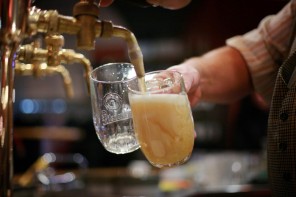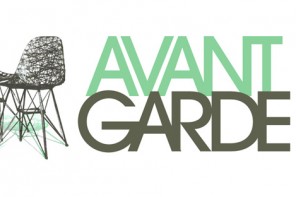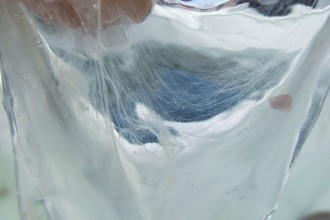Nelize Ernst chats with Tony Budden
Nelize Ernst: Tell us a bit about your background and how Hemporium got started?
Tony Budden: We started in 1996 making bags out of hemp canvas for the student market as it was such a strong textile, and obviously had a certain “maverick” appeal as it was made out of cannabis.
There was no natural and organic market back then. As Duncan Parker, my partner, and I learned more about the plant, we became more aware of the other possibilities regarding what hemp can offer as an eco-friendly resource that can supply jobs, houses, food, fibre, fuel, oil etc. This lead to us evolve into our current role as showcasing as much as we can of what hemp has to offer.
N.E: Hemp was discovered about 8000 thousand years ago, what exactly is Industrial Hemp, what can it be used for, and how sustainable is it?
T.B: Industrial Hemp refers to the non-psychoactive varieties of the cannabis plant and the products that are made from it. Hemp grows organically with ease, and can grow up to 4m high in just 4 months. It uses less water, energy, agro-chemicals and land than other fibre crops. It is a zero waste plant, and produces 3 main products: fibre, hurds (the woody stalk) and seeds.
It is a very efficient photosynthesiser and gets most of what it needs from the sun. It has a deep tap root that aerates the soil, and it can leave the soil in a better condition than when it was planted. It also works very well as a natural herbicide as its fast rate of growth and canopy will drown out most other weeds.
N.E: The stalks and seeds of the Hemp plant are used to make various products…which part is used for what?
T.B: The fibre found in the bark of the stalk is 3 times the tensile strength of cotton, and one of the longest vegetable fibres known to man. It is also hollow so has excellent insulating as well as anti-bacterial properties. The fibre is used for textiles, insulation materials, paper, fibreglass replacement and more.
The hurds, or woody part of the stalk, consist of crystalline cellulose that is porous, strong and lightweight. This can be used for animal litter, paper, particle board, combined with lime to make hempcrete for building, or as feedstock for ethanol.
The seeds contain protein and oils. They have the optimum ratio of essential fatty acids for the human body. The have around 30% globulin edistin proteins which is easily digested. They oil can be used as a base for cosmetics, as biodiesel, as a lighting oil, as a base for paints and varnish and as an EFA supplement.
N.E: There are so many Eco-friendly products on the market? What makes Hemp products so different?
T.B: There are other fibres, other biomass plants, other seeds and oils, but there is no other resource that can be grown as easily and with as little input that can provide so many solutions as far as food, fibre, medicine, oils, construction materials, fibreglass replacements, paper and more all while absorbing heaps of CO2 and not costing the planet.
N.E. Seems like the benefits of using hemp is endless from, foods, textiles, paper, non toxic detergents and biodegradable plastics. What is your best Hemp product?
T.B: I cannot do without my hemp socks. Having breathable anti-bacterial fibres around your feet makes such a difference.
N.E: How do you feel about your day when you wake up in the morning?
T.B: Most of the time I’m motivated and positive to be part of such a radical paradigm shift that is happening on the planet at the moment and people starting to accept their responsibility and reconnecting with the earth. Sometimes though, I feel frustrated that we hold such a solution in our hands yet we still have to import the raw material to South Africa.
N.E: Where is South Africa currently on the Hemp industry?
T.B: Currently it is still only possible to get research permits to grow hemp, and even this is very difficult, but there is more momentum now than ever before with lots of interest and support from the private sector and within the government to get industrial hemp legitimised in SA. I am positive we will be able to legally grow within the next few years.
N.E: Tell us a bit about the Western Cape Hemp initiative
T.B: We came together as independent farmers, architects, business people etc to help lobby for hemp and promote the use of this amazing resource. Its membership has fluctuated over the years as people join but then get frustrated as they cannot grow or get it out of stagnation in research. We are in the process of reforming it as a cooperative with the view of supporting the hemp industry, especially the emerging farmer communities.
N.E: How could we as a country benefit from the Hemp industry?
T.B: Eco-friendly jobs, sustainable housing and nutrition – need I say more?
N.E: What is the hardest part of what you do?
T.B: Breaking through the stigma hemp has through its association to marijuana. There is a lot of “cannaphobia” out there and people assume that hemp is all about smoking dope. Cannabis is a varied plant with so many different uses, saying it is all a drug is the same as saying all mushrooms are psychedelic and we shouldn’t eat any.
N.E: What is the best part of what you do?
T.B: Being able to take someone who has only ever known cannabis to be a drug and showing them what is behind the “smokescreen”. There are an estimated 25000 end uses for the plant, and seeing the light go on behind someone’s eyes as they see what potential hemp offers makes it all worthwhile.
N.E: What advice would you give to young entrepreneurs who would like to get involved in the Hemp industry?
T.B: Be ready to work hard at educating and changing people’s perceptions. Hemp faces the same challenges as any “new” product out there, and there is resistance from people who do not understand it. Show it in a positive light as something that could make real change on the planet and in SA, and aim to have the products you make demonstrate the best hemp has to offer.
N.E: What is your best achievement so far? (Either Personal or Business)
T.B: Being invited to present at the International Hemp Building Symposium in Ireland was an honour for me, but mostly just seeing how we have helped push hemp into the mainstream mentality and get it taken seriously as a valuable resource.
N.E: Tell us about your latest project, “The House that Hemp Built”
T.B: After years of showing a hemp brick and a piece of hemp insulation and chipboard as our demonstration of hemp houses, we are building a hemp house in Cape Town. Please visit our blog at http://www.hemporium.com/blog.php?article=23
N.E: Describe a typical day in the life of “Tony”
T.B. Waking up in Kommetjie and looking out over the Atlantic, making a smoothie (with hemp of course) or veggie juice, heading to work and attending to emails etc (too much time behind the desk I am afraid), attending to any issues from the shops and warehouse, currently spending time on decisions needed for the hemp house, dealing with suppliers and customers, writing articles and blogs and product development. Heading home at the end of the day, hopefully via the beach for a surf.
N.E: What’s the most important thing you learned so far in your career?
T.B: It is crucial to find the balance between structure and flexibility. You need to know your role and be responsible for it, especially in a small business, but things are changing so fast you need to stay in the flow and be able
to adapt to new ways of “business unusual” when needed. Oh, and also to be very weary when dealing with “corporates”.
N.E: What are your plans for the next 5-10 years?
T.B: We aim to get a permit to grow a relatively small amount of hemp here in the Western Cape, but mostly to set up primary beneficiation plants and be the link between farmers and the market.We really aim to push hemp for building and hope to see many hemp houses in SA soon!
N.E: What advice would you give to the Youth of South Africa on green issues and global warming?
T.B: Take back your power, and with that your responsibility. Everything you do has an impact and it is your choice whether that is positive or negative. Don’t give your power to someone else or think that everything is going to be ok because “they” know better, be it the government, your doctor, the media etc.
Be conscious and look inside and connect with the earth at every opportunity. Get outside, find some fresh air, breathe, take off your shoes, swim in the ocean, walk in the forests. Love nature, as this will give you the motivation to make change and protect it.
Teach others that it feels good to live positively and with respect for the earth and your community.
“Don’t destroy what you came to enjoy!”
Visit www.hemporium.com or contact them on +27 (0)21 702 4988
The liveeco team




